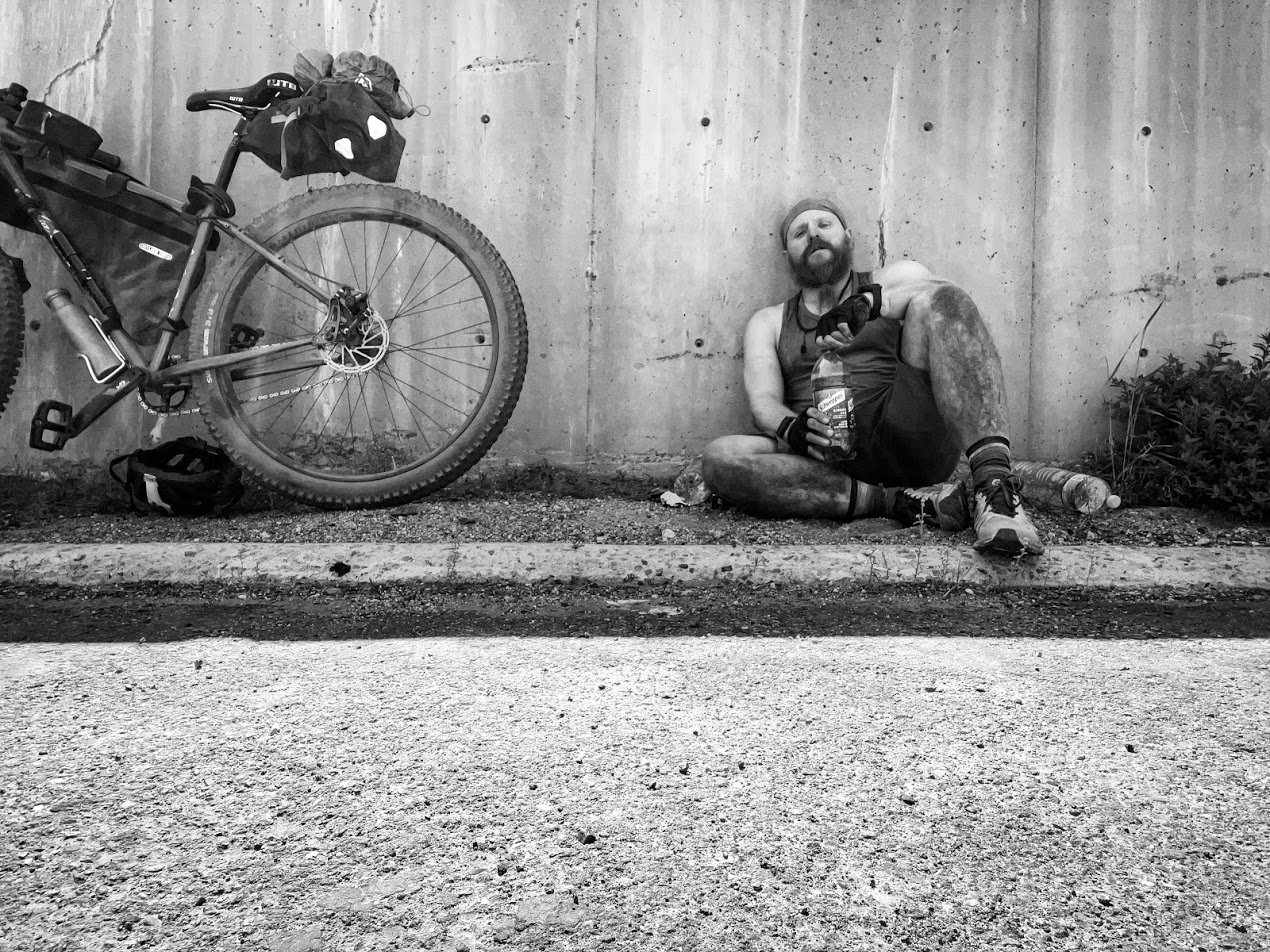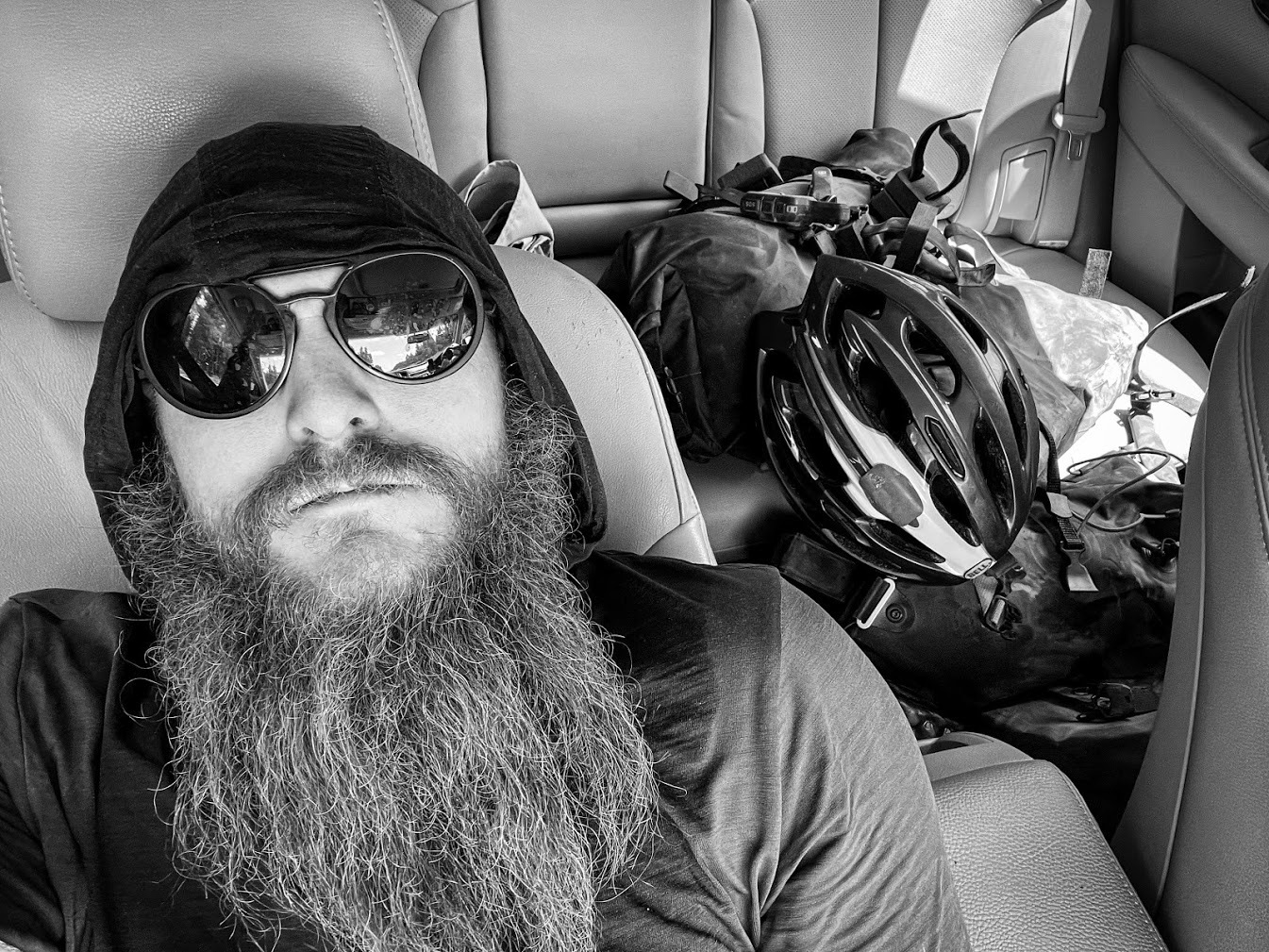A Long Overdue Adventure
“Is this the year I finally get into bikepacking?” That’s the question I asked myself as the flaming you-know-what storm of 2020 lurched to a close and the equally as terrible first quarter of 2021 began. As it turns out, this was the year I got into bikepacking, and it’s improved my year considerably. My long-suffering feet and knees are enjoying the change of pace, as is my brain, though my rear end is not at all amused.

As a bonus, bikepacking has given me a new lens through which to examine my ultralight backpacking philosophy. I’m not sure I learned anything new, per se, but my reflections have led me to correct some drift and recommit to the ideas that keep the contents of my pack light and functional and enjoyable.
Bringing Less Stuff is Easier than Bringing Lighter Stuff (Generally)
I ended up with about 30 liters of space on my bikepacking rig. My smallest regular-use, multi-day backpacking pack is 40 liters. When I first began backpacking with a 40-liter pack I was pretty good about keeping things small and simple but my gear has grown to fit my space like a goldfish. So bikepacking provided me a chance to reexamine my regular gear choices and do a much-needed volumetric downsize.
I also ran into two more volume-related issues.
The first is this: I learned pretty quickly that I don’t like strapping items to the outside of my bikepacking rig like I might while backpacking if I overshoot my pack’s internal or external pocket volume. It’s a quick-fix with backpacking that doesn’t necessarily apply to bikepacking (especially if you are doing the kind of bikepacking that involves singletrack), and it’s made me recommit to working within the confines of the pack I choose for any given trip.

The second issue is that with bikepacking you aren’t working with a single large cylindrical pack with three or four pockets. Instead, you have, at minimum, three entirely separate packs (probably more) all with different shapes and weight capacities. This necessitates a major packing re-think, and it also means things are harder to find when you need them fast (at least for me.) Having fewer things to find in the first place is a major win here.
I’ll Take Functionality and Reasonable Cost Over Expensive Incremental Weight Savings (Almost Always)
Something that weighs 10 ounces (283 g), works the way it is supposed to, and doesn’t break under stress is better than something that weighs 5 ounces (142 g), is hard to use, fragile, and prone to failure. If the 10-ounce thing is cheaper – and it almost always is – even better.

I consider the above paragraph a core component of my ultralight backpacking philosophy, but it’s easy to lose sight of in the midst of some of the more negative sides of ultralight culture and the continuing trend of gear manufacturers to win a weight race at the expense of usability.
I realized pretty quickly that I’d be more than happy to buy a bike that was four or five years old, weighed 30 pounds (14 kg), and was constructed of durable steel over a brand new, 20 pound (9 kg) relatively fragile carbon ride, mostly because there was simply no way I could afford the latter while the former was within my price range. I couldn’t be happier with the bike I got – it does exactly what I need it to do and it didn’t cost me the equivalent of a well-cared-for but aging Subaru Outback.

Sometimes I have to suffer through occasional well-meaning but annoying conversations along the lines of “you wouldn’t be pushing your bike up this hill right now if it had a carbon frame/the latest geometry/the newest cog-set/etc.” But I find this a small price to pay for the, well, small price I had to pay for a durable and functional piece of gear.
This can be applied to backpacking as needed – particularly big-ticket items, and especially shelters. For all the same reasons, I’ve made the decision to go back to Aquamira after a few years of experimenting with filters and UV treatment systems.
I’ll Take Functionality Over Maximum Comfort (Sometimes)
My recent bikepacking trip in the Sierra Nevada was about 40% singletrack and involved multiple several-thousand-foot climbs. I’d be lying if I told you I didn’t spend the bulk of my trip seconding guessing my decision to use a rigid front suspension and swap out the rear derailer/11-speed cog set for a single-speed setup. I suffered on this trip in ways that I wouldn’t have suffered if I’d had front shocks and a derailleur. But – and this is crucial – I didn’t suffer past the point of enjoyment. And by the time the trip ended I was utterly sold on the single-speed life.
The peace of mind I got from knowing I wouldn’t end my trip early by accidentally bending my derailleur (say, by leaning it up against a tree, or brushing against it with a feather, or exposing it to a gentle gust of wind) added considerably to my fun and made the occasional suffer-fests worthwhile.

Apply this lesson to backpacking and the first thing that sticks out to me is my sleep system.
On my two most recent 5+ day backpacking trips, I’ve experienced un-field-reparable pressure loss with my oh-so-comfortable and expensive inflatable air mattress. Did I offend the air mattress gods in some way? One of those trips was a thousand miles away from the nearest cactus.
Sleeping on the right air mattress > sleeping on closed-cell foam (CCF), but sleeping on closed-cell foam > sleeping on the ground. I can’t believe these words are going to leave my mouth, but I’m considering switching back to a CCF system simply because it gives me one less thing to worry about. My ongoing struggles with mental health mean I worry a lot anyway, so removing even one major anxiety point is a significant win. It does mean that I need to be pretty exhausted to get a good night’s sleep, so I guess that’s where that single-speed cog comes in.

In Closing
You can, of course, just enjoy a new pastime without relating it back to backpacking in some way. In fact, I’d recommend it. But if you’ve found yourself in a backpacking rut and need a way to course-correct that’s a little more philosophical and a little less spreadsheety, consider bikepacking or some other tangental long-distance pastime. Fastpacking? Maybe it’s for you. Packrafting? Seems awfully wet but go for it. Alpacapacking? Adorable and fun to say. Extreme off-road unicycling? Your mileage may vary, but I bet you’d learn a thing or two.
Related
- read more by Andrew Marshall
- check out our two podcast episodes on bikepacking here and here
- a good way to lighten your pack is to improve your skills
DISCLOSURE (Updated April 9, 2024)
- Backpacking Light does not accept compensation or donated/discounted products in exchange for product mentions or placements in editorial coverage. Some (but not all) of the links in this review may be affiliate links. If you click on one of these links and visit one of our affiliate partners (usually a retailer site), and subsequently place an order with that retailer, we receive a commission on your entire order, which varies between 3% and 15% of the purchase price. Affiliate commissions represent less than 15% of Backpacking Light's gross revenue. More than 70% of our revenue comes from Membership Fees. So if you'd really like to support our work, don't buy gear you don't need - support our consumer advocacy work and become a Member instead. Learn more about affiliate commissions, influencer marketing, and our consumer advocacy work by reading our article Stop wasting money on gear.




Home › Forums › Using a New Sport to Refine Your Ultralight Philosophy